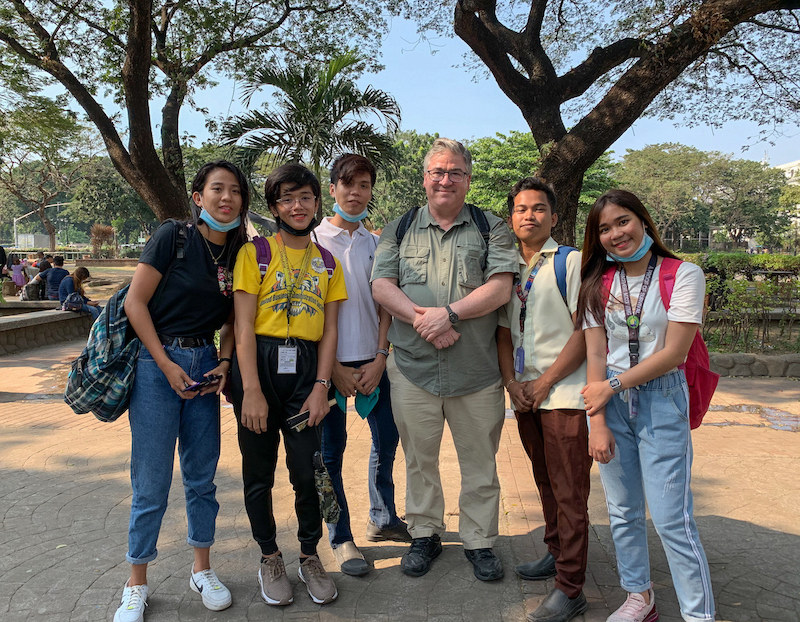
For linguist Daniel Davis, English is a language that’s traveled the world and evolved in surprising ways in every place it's found a home. Like other sociolinguists, he often speaks of Englishes, plural, or otherwise precedes the term with a modifier to designate which variety he’s talking about, e.g. American English, Scottish English, Indian English or Philippine English. It’s not just a language nerd thing. For him, the plural better reflects how the language has actually evolved historically and been shaped by all the people who have encountered, adopted and put their own spin on it. It also helps chip away at the persistent idea that there’s just one correct English. “I taught English and linguistics in Hong Kong for eight years, and some of the students would almost tease me that they spoke the correct English, because they spoke British English,” Davis says. “And in the late-1800s, New England English was held up as a model in the U.S. So with language, what’s interesting to me isn’t models or correctness, it’s variation and cultural identity.”
Davis’ own work in this discipline of world Englishes has centered on three distinct geographic areas: the various forms of English spoken in the British Isles and Europe, North American Englishes, and those that have found a home in the Pacific countries, like Hong Kong and the Philippines. The latter is the subject of Davis’ most recent research, which he's renewing now in a second Fulbright fellowship, after his 2020 Fulbright got interrupted by the pandemic. The story of English in the Philippines, where, along with Filipino, the language has official status, is a rich story, indeed. From the mid-1500s until 1898, the Philippines was a colony of Spain, but following the U.S. victory in the Spanish-American War, it became a territory of the United States. A prominent feature of that new period of American colonialism was American English, which, along with other subjects, was taught at hundreds of new public schools that were built in the early 20th century. As a consequence, Davis says, English spread quickly throughout the country. He says records indicate that within 50 years, about one third of people in the Philippines reported speaking English.
So why did English take root so quickly in the Philippines? Davis says there are a number of factors. Some scholars argue that people in the Philippines embraced English as a symbol of 20-century modernity. English also provided access to education within the new American-run public school system, and knowledge of English was increasingly a gateway to new business opportunities across Asia. But he says another part of the story may be that the Philippines, historically, has always been a place where language diversity has thrived. Well before the American (or even Spanish) presence there, the Philippines was already extremely multilingual. Owing to its geography (the Philippines consists of more than 7,000 islands), the country is home to approximately 180 different languages. “Everybody speaks two, three, four languages — on a daily basis, depending on the social environment,” Davis says. “For example, at the university where I was, a departmental administrator might speak fluent English at the university. But out in the street, if she’s hailing a minibus, that’s all going to be in Tagalog, which is the main language spoken around Manila. But then calling her relatives back in northern Luzon, she’d talk with them in the local language, which is Ilocano. That kind of constant language switching is almost impossible for many Americans to imagine, but it’s a routine part of life in the Philippines.”




